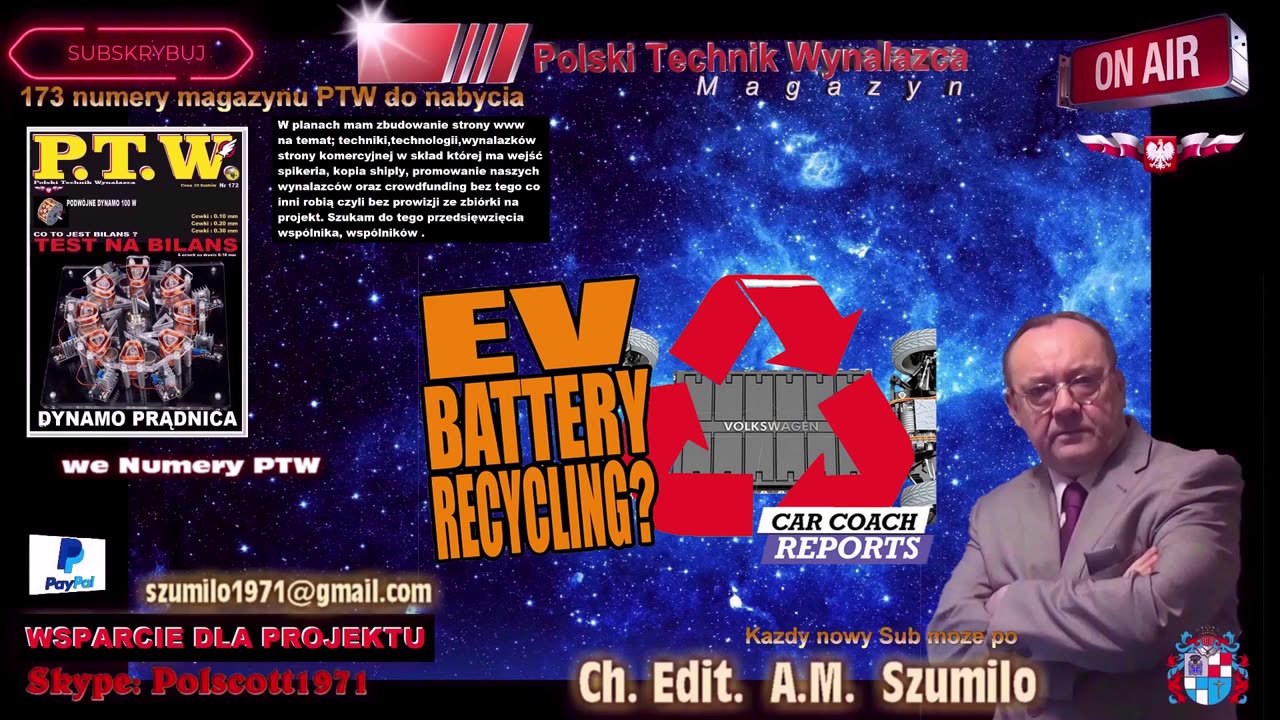Premium Only Content

RECYCLING BATTERY FROM ELECTRIC VEHICLES PROBLEM / EU PROBLEM / LITHIUM BATTERY EV
combination of mechanical and hydrometallurgical technologies to recycle the battery materials. Our industrial-scale, low-CO2 processes .From their initial discovery in the 1970s through the awarding of the Nobel Prize in 2019, the use of lithium-ion batteries (LIBs) has increased exponentially. (1−4) As the world has grown to love and depend on the power and convenience brought by LIBs, their manufacturing and disposal have increasingly become subjects of political and environmental concerns. (5,6) World reserves of lithium, cobalt, and other metals are limited and unevenly distributed, while their mining is energy and labor intensive and creates considerable pollution. (7,8) More than 70% of the world’s cobalt comes from Congo, (9) with no other country producing more than 5%. China and Mozambique produce 70% of the world’s natural graphite, an important material for anodes. (10) As a result, natural disasters, war, or resource allocation decisions may also change the availability of these materials.
Resource scarcity and supply are particularly important due to the short device lifetime, whether from design obsolescence, “upgrades” to newer smartphone models, or, quite often, the LIB nearing the end of its own life. By most accounts, most discarded LIBs eventually are landfilled or stockpiled, contaminating the land while wasting energy and nonrenewable natural resources. As of February 2019, there were over 5.6 million electric vehicles (EVs) in the world, a 64% increase from 2018. (11) By 2040, 58% of all cars sold worldwide are anticipated to be EVs. (12) With explosive growth in EV numbers combined with the sheer sizes of their batteries (Tesla Model 3 Long Range’s battery contains 4416 cells and weighs 480 kg), (13) significant LIB waste is and will be generated every year which, if not recycled and reused, will exert massive environmental impacts and accelerate the depletion of mineral reserves. Adding to the recycling difficulty, LIBs are complicated structures comprising one of five common cathodes, an anode, electrolyte, a separator, and current collectors along with packaging components (Table 1, Table S1). The International Energy Agency, for example, estimates that electric vehicles produced in 2019 alone generated 500,000 tons of LIB waste, and the total amount of waste generated by 2040 could be as much as 8 million tons. (14)
-
 13:22
13:22
Stephen Gardner
6 hours ago🔥You'll NEVER Believe what Trump wants NOW!!
72.7K190 -
 54:56
54:56
Digital Social Hour
1 day ago $8.21 earnedDOGE, Deep State, Drones & Charlie Kirk | Donald Trump Jr.
36.7K2 -
 DVR
DVR
The Trish Regan Show
7 hours agoTrump‘s FCC Targets Disney CEO Bob Iger Over ABC News Alleged Misconduct
44K34 -
 1:48:19
1:48:19
The Quartering
8 hours agoElon Calls White People Dumb, Vivek Calls American's Lazy & Why Modern Christmas Movies Suck!
127K101 -
 2:08:42
2:08:42
The Dilley Show
9 hours ago $33.55 earnedH1B Visa Debate, Culture and More! w/Author Brenden Dilley 12/26/2024
112K24 -
 4:55:59
4:55:59
LumpyPotatoX2
11 hours agoThirsty Thursday on BOX Day - #RumbleGaming
107K5 -
 1:04:52
1:04:52
Geeks + Gamers
10 hours agoDisney RATIO'D on Christmas Day | Mufasa Embarrassed By Sonic 3
79.6K9 -
 8:27:46
8:27:46
Sm0k3m
14 hours agoPlaying games on Rumble
50.7K2 -
 10:37
10:37
Russell Brand
2 days agoHow is this even allowed?
201K883 -
 1:37:26
1:37:26
Real Coffee With Scott Adams
11 hours agoEpisode 2701 CWSA 12/26/24
110K101